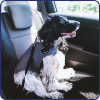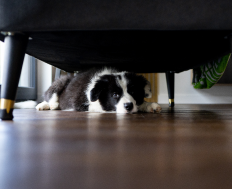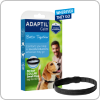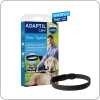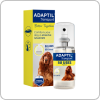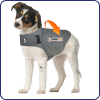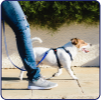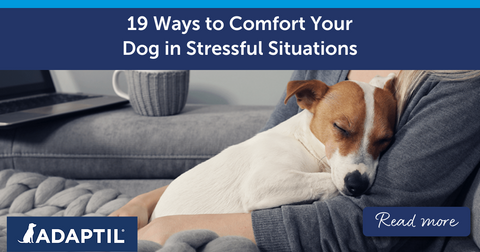
The Ultimate Guide to Being the Perfect Dog Sitter
Spending your days looking after four-legged friends must be one of the best jobs in the world! But while it may seem like it’s all fun and games (which it can be), being a great dog sitter also requires preparation and understanding.
In this blog, we’ll share our ultimate guide to being the perfect temporary pet parent, giving you tips on how to become a trusted dog sitter, as well as things to consider if you’re just getting started.
What Is a Dog Sitter?
A dog sitter is someone who temporarily cares for a dog while their caregiver is away. Dog sitting can take place in the caregiver’s home or the sitter’s home. For many dogs, being at home when their human is away can be less challenging than going to a boarding kennel or dog hotel.
Dog sitters are responsible for things such as:
-
Feeding the dog and ensuring they have water.
-
Giving them walks and exercise.
-
Administering medication, if needed.
-
Providing companionship and play sessions.

How to Become a Trusted Dog Sitter
When becoming a dog sitter, it’s important to build trust with both the dogs and their parents. This helps create a bond between you and the dog, as well as giving their human the peace of mind that their pup is in the safest hands possible!
Some ways to become a trusted dog sitter include:
-
Building experience – Firstly, start with building your experience. Start looking after friends and family members’ pets or volunteer at shelters to gain experience interacting with different dogs. Consider joining local platforms or any national associations to learn more and find potential clients.
-
Take dog courses to boost your credibility – A trusted dog sitter also needs the right knowledge. Try to learn more about a dog’s body language and behaviour so you can better understand their needs. Our ADAPTIL Body Language Decoder course is a great way to learn about dog body language and demonstrate your skills.
-
Collect references and reviews – Positive testimonials and feedback are a brilliant way to build trust with new clients.
-
Be transparent and communicative – When looking after someone’s pup, share updates, photos and any concerns during the sit. The pet parent will likely appreciate seeing a photo of their pooch while they’re apart!
- Plan a meet & greet beforehand – Always meet the dog and their human(s) before the first sit to ensure compatibility.

Behaviour Dog Sitters Should Understand
As a dog sitter, understanding a dog’s behaviour is essential. Dogs communicate through their body language and behaviour, so understanding it allows you to meet their needs, improve communication and build trust.
-
Body language basics – Understanding the basics of dog body language can help you better understand them. By recognising when a dog is showing signs of stress, you can make changes to ensure they aren’t experiencing any discomfort.
Using ADAPTIL Calm can help dogs feel calmer and more comfortable in stressful situations. Simply plug it into an electrical socket in the room in which the dog spends the most time and leave it to send calming signals, giving the dog reassurance. -
Play styles and energy levels – Consider the different needs for exercise and play for individual dogs. Think about the dog’s age, breed and any health issues that you’ve discussed with the dog’s parents.
- Habits and routine – Observe and respect the dog’s routine and behavioural preferences. Keeping to their natural routine can help them feel more at ease in your company.

Tips for Dog Sitting for the First Time
Ask Lots of Questions – Communication Is Key!
When first starting as a dog sitter, ask as many questions as you can! Communicating with a pet parent about their pooch can help you understand how to look after their dog, as well as discover their individual and specific needs.
Some of these questions can include:
-
Can you share your dog's feeding schedule, dietary needs and any medical conditions?
-
What are their favourite toys to play with or activities to do?
-
Are there any specific behaviours or training cues I should be mindful of?
-
What is their usual walking routine, and are there any recent changes I should know about?
Stick to the Dog’s Routine Where Possible
Dogs thrive on consistency, so try to mirror their usual schedule. Sticking to a dog’s routine, where possible, provides a sense of normalcy, helping to build trust and comfort between you and the dog.
If the dog is going to be spending time in your home, make sure they have access to familiar blankets, toys or an item with their human’s scent to help them feel more comfortable.

Start Slow and Use Positive Reinforcement
When first meeting a dog, start slowly and let them come to you. Follow the dog’s lead for the sort of interaction they want. Just being in the same room with them may be all they need, whereas others may want to be closer to you.
Understand what the dog enjoys doing and learn things such as how they prefer to be petted. This can help you give the right responses when the dog wants to interact with you. Using positive reinforcement with treats and praise is also a great way to help build trust.
Stay Safe and Informed
When you first start dog sitting, it’s crucial to make sure that you are informed about the correct safety measures and protocols. Make sure you have the necessary licences and insurance in place so you’re covered to look after pets.
Keep the dog safe by doing things such as using the correct collar or harness, understanding any behaviour issues they may have and making sure all areas are safe and suitable for the dog if they’re coming to your home.
For more advice on how to look after a dog, continue exploring the rest of our blogs online. Or if you’d like to receive the latest news and advice straight into your inbox, don’t forget that you can also sign up to our newsletter.
